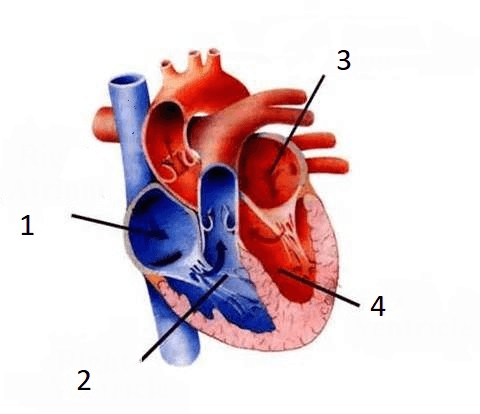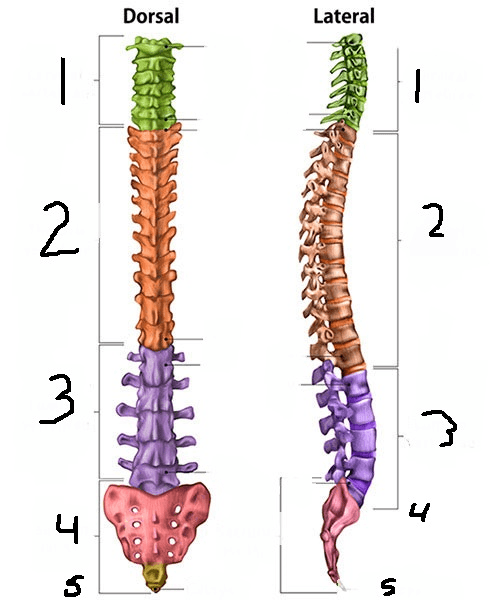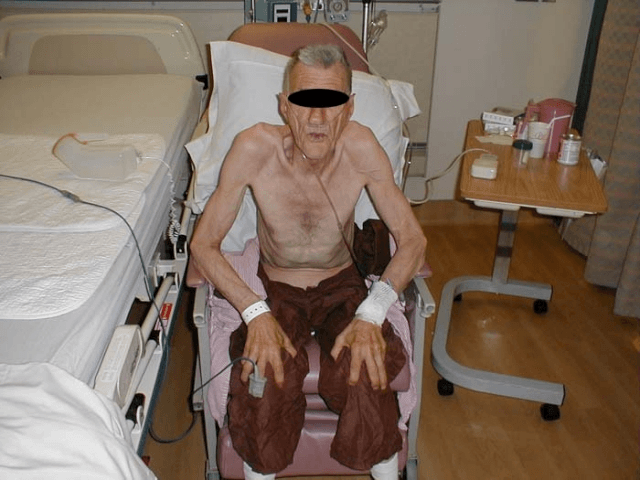You are dispatched to a motel for an unknown medical emergency. The room is small with two beds and two occupants. The patient is a 33-year-old woman lying supine on the bed. She opens her eyes when you speak to her but is lethargic and reports fever, chills, vomiting, and diarrhea. The man in the room tells you she has been sick for several days and has not eaten in the past 2 days. Your assessment reveals pain and tenderness in the right lower abdominal quadrant. Her vital signs are a blood pressure level of 100/60 mm Hg; a pulse rate of 140 beats/min, strong and bounding; and a respiratory rate of 24 breaths/min and shallow. Her skin is flushed and hot to the touch. The patient reports no significant medical history and does not take any medications.
What is the first concern when entering this room? A. ABCs
B. Physical assessment
C. Scene safety
D. Vital signs
What is (C), Scene Safety
The front surface of the body, the side facing you in the standard anatomic position?
What is Anterior
The criteria to be considered a multiple casualty incident (MCI) include:
a. Any event that involves mass transit or a large building where people could be located
b. Any event that places excessive demands on EMS personnel and equipment
c. Any event that typically involves more than three emergency vehicles
d. Any event that requires police, fire, and EMS to respond simultaneously
What is (B) Any event that places excessive demands on EMS personnel and equipment
Patella
Kneecap
The Suffix -"Cardi/o" refers to
What is the heart
Dose of Aspirin
81-324 mg PO
The larger bone of the forearm at the wrist is the:
A. humerus.
B. ulna.
C. radius.
D. clavicle.
What is (C), Radius
Parts of the body that lie farther from the midline; also called outer structures.
What is lateral
You are transporting a critical trauma patient to the hospital. As you approach a railroad crossing, the gates are down and the lights are flashing. You see a long train approaching. You determine that the train is traveling very slowly. You should:
a. Turn on your lights and siren while waiting for the train to pass
b. Maintain control of the ambulance and cross the tracks quickly
c. Wait for the train to pass if there is no immediate alternative route
d. Signal the train to stop and proceed around the warning gates
What is (C) Wait for the train to pass if there is no immediate alternative route
How many lobes does each lung have
Left- 2
right- 3
The suffix -"Itis" refers to?
What is inflammation
what percentage of oxygen is in the atmosphere?
For example, using a bag-valve mask without it being connected to oxygen.
What is 21%
1) Which of the following terms describes the body's ability to maintain its normal state?
(A) Anabolism
(B) Catabolism
(C) Tolerance
(D) Homeostasis
(E) Metabolism
What is Homeostasis

*** Bonus question for double the points***
Can you name the only ARTERY that carries DEOXYGENATED blood?
What is:
1: Right Atrium.
2: Right Ventricle
3: Left Atrium
4: Left Ventricle
BONUS: Pulmonary Artery
An area where adequate decontamination has ensured that there will be no spread of any hazardous materials and EMS can fully treat patients.
What is the cold zone
Which of the following is located beneath the diaphragm in the left upper quadrant of the abdominal cavity?
(A) Appendix
(B) Duodenum
(C) Gallbladder
(D) Pancreas
(E) Spleen
What is (E), Spleen
The suffix Hepat/o refers to
What refers to the liver
Pediatric Epinephrine Dose
0.15 mg
A 59-year-old man with a history of congestive heart failure is suddenly awakened in the middle of the night with the feeling that he is smothering. When you arrive at the scene, you find him lying in bed with his head propped up by three pillows. He is conscious and alert but is experiencing obvious respiratory distress. His skin is pale and diaphoretic.
Which of the following should be your MOST immediate action?
A. Auscultate his lung sounds.
B. Assess his oxygen saturation.
C. Position him so that he is sitting up.
D. Apply oxygen via a nonrebreathing mask
What is (c), Position him so that he is sitting up
Closer to or on the skin.
HINT- Think of a cut or laceration.
What is superficial
In most states, the operator of an ambulance may disobey certain specific traffic laws only when responding to an emergency and when:
a. At least one emergency light is flashing or illuminated
b. At least two emergency lights are illuminated and the siren sounded
c. All emergency lights and scene lighting are flashing or illuminated
d. All emergency lights are flashing or illuminated and the siren is sounding
What is (D) All emergency lights are flashing or illuminated and the siren is sounding

1: Cervical (7)
2: Thoracic (12)
3: Lumbar (5)
4: Sacrum (5) FUSED
5: Coccyx (4) FUSES
The prefix -" AUSCULT/O" refers to
What is to listen
Assisted nitroglycerin dose
0.4 mg sublingual

A person sits or stands leaning forward and supports the upper body with hands on knees or another surface.
What is the tripod position?
What does AVPU stand for? What do we use it for?
Alert, Verbal, Painful, Unresponsive.
Check for level of responsiveness.
Organisms that can cause diseases in humans when in contact with the infected patient's blood, such as the HIV virus, are known by what name to the EMT?
a. Cross contamination
b. Airborne pathogens
c. Bloodborne pathogens
d. Parasite-host relationship
What is (C) Bloodborne pathogens
Which of the following is the large bone found superior to the patella and inferior to the ischium?
(A) Calcaneus
(B) Femur
(C) Symphysis pubis
(D) Tibia
(E) Ulna
What is (B) Femur
The Prefix - "Hydr/o" refers to?
What is water
Name the six rights of medication administration
Six Rights
A. Right patient
B. Right medication
C. Right dose
D. Right Route
E. Right Time
F. Right Documentation